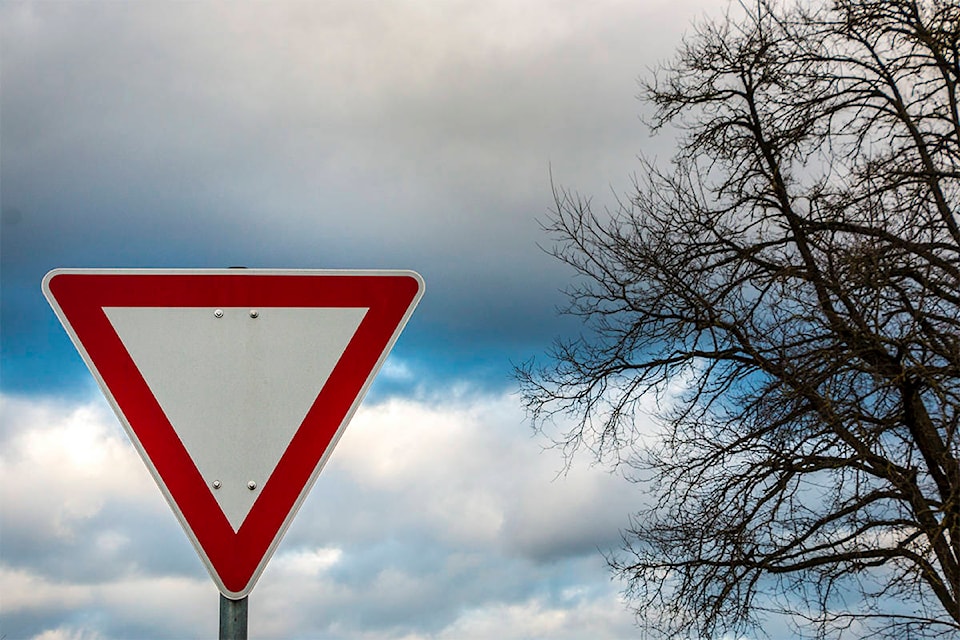Of all the traffic signs and rules out on the roads, one of the most misunderstood is yielding. At the same time, it may be one of the most important to avoid possible crashes. All crashes are the result of one driver or the other failing to abide by some form of traffic control, sign or rule.
You may think of yielding as what you do at a yield sign. When approaching a yield sign, you need to slow down, but you’re not required to come to a complete stop if the path ahead is clear. Before you proceed from the yield you always look to your right, not just to your left, for oncoming vehicles, motorcyclists, cyclists and pedestrians before you proceed.
In almost all driving situations, when you’re making a left-hand turn, you are expected to yield to other vehicles, including when a driver facing you is turning right. Also, when you’re turning onto a multi-lane road, whether it’s a left or right turn, you are required to stay in the same lane you were in.
You also may think of yielding with regards to roundabouts. On approach, you slow down as you get to the roundabout and yield to pedestrians crossing at the cross walks. As you enter the roundabout, you look left to determine if there is an adequate gap in the circulating traffic to safely enter. If there isn’t, you must not proceed. You must always yield to traffic already in the roundabout.
There are a lot of drivers out there that don’t seem to know that you are also expected to yield to city transit buses. If you see a bus signalling to come onto the roadway or into your lane, you must let them in. If you fail to comply the fine can be $500. The city has recently been posting reminders on social media about this, which leads me to believe that heightened enforcement is coming. You have been warned.
Of course, you must yield to emergency vehicles traveling in either direction. This is not only to ensure safe passage for the police, fire, or ambulance but also to give the driver a clear view of the road ahead of them. So please yield early when you see them coming.
There are many other instances when you must yield to other vehicles on the road. Most of these are widely understood and accepted.
However, if you’re like most people, you probably tend to think first about whether you have the right-of-way rather than whether you should yield.
Yielding and right-of-way seem to butt heads regularly out on the roads. Assuming you have the right-of-way is dangerous and is the cause of a lot of unnecessary crashes. This sense of entitlement on the road and believing you should have the right-of-way also seems to the cause of a lot of road rage.
It’s important to realize that the law doesn’t actually give you the right-of-way, but rather dictates when you should yield. The goal is always to keep two vehicles out of the the same space and avoid them from crashing.
It can get complicated. For example, if another vehicle enters an intersection ahead of your vehicle, even if you should have had the right-of way, you may now be expected to yield to that vehicle. If you don’t, you could be charged in any resulting crash. This would suggest that the only real right-of-way on the road is defensive driving.
Defensive driving is generally defined as driving to save lives, time, and money, in spite of any conditions around you and the actions of others. So, yielding seems to be at the very heart of defensive driving.
Rather than focus on what you may feel is your right to proceed because you should have the right-of -way, it’s always be better to focus on driving defensively and avoiding a possible crash. This may be a hard habit to break for a lot of drivers but one well worth focusing on.
Having said all this, sometimes relinquishing the right-of-way may be considered polite but may not always be a good idea. Stopping in an intersection or in a traffic circle to let someone in can confuse other drivers and could result in a “stand-off” where no one’s sure what to do. And waving someone to turn in front of you when you’re stopped in traffic could block that driver’s view of vehicles coming up beside you.
In a perfect world everyone would yield when they should and only proceed when they had the right-of-way and it was safe to do so.
Catch Driving, with Jens on CHON FM Thursdays at 8:15. If you have any questions or comments you can reach out to Jens Nielsen at drivingwithjens@gmail.com, Facebook or Twitter: @drivingwithjens.
